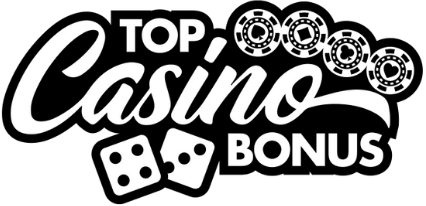How to play baccarat: rules and basic strategy
You’d be surprised how many hotshots walk into a baccarat game thinking it’s poker in a tuxedo, bluffing, side-eyes, all that jazz. But that’s not where the soul of baccarat lives. It’s a pure odds game, rooted in structure and rhythm. If you treat it like roulette or craps without understanding the house mechanics, you’ll bleed chips fast. Let’s carve the game open and get our hands in the gears.
Table of contents
Understanding the basic objective of baccarat
At its core, baccarat is about betting on which hand, the Player or the Banker, will finish closest to a total of nine. No overthinking here. You can also place your bet on a Tie, which is when both hands end up with the same total. That’s it. None of this card-counting baloney. You’re wagering on outcomes, not controlling them.
How scoring works in baccarat
The value system is what throws most greenhorns. Cards 2 through 9 are scored at face value. Aces are one point. Tens, Jacks, Queens, and Kings? Worthless, all are zero. Let’s say you get a 7 and an 8. That’s 15, right? Not in baccarat. You drop the first digit, so your hand is worth 5. Only the unit digit counts when values go over nine.
When a third card comes into play
This is where eyes glaze over, but it matters. Both the Player and Banker can receive a third card depending on their total. The Player always draws on totals of 0–5. If the Player stands on 6 or 7, the Banker then plays by more complex third-card rules that depend on its own total and what the Player drew. Sound confusing? It is, but you don’t have to memorize it. The dealer automates these rules.
Betting options and odds
Now let’s chew on the real meat, the bet structure. The Banker bet statistically offers the best edge for a player, with just 1.06% house edge. Yet most beginners avoid it because of the 5% commission on winnings. That commission? It’s the casino’s way of telling you Banker’s stronger. Ignore that warning, and you’ll pay for it in the long run.
Why the Tie bet is a rookie trap
Every table has that one person putting pile after pile on the Tie, dreaming of that 8:1 payout. They’re chasing fireworks in a thunderstorm. The house edge on Tie is brutal, over 14%. Sure, it hits now and then. But if you’re playing long sessions, it shreds your bankroll. I’ve watched younger players burn whole bankrolls on ties while ignoring math that’s worked for decades.
Basic baccarat strategy that works
You don’t need to get fancy here. Baccarat rewards discipline, not gimmicks. The first rule of thumb? Always favor the Banker bet until it’s clear the table is swaying anomalously. Patterns exist, but they’re statistical tendencies, not certainties. Still, streaks deserve respect if you’re tracking outcomes across shoes.
Money management over miracle systems
I’ve seen more systems fail than succeed. Martingale, Fibonacci, they all choke under variance. Instead, focus on flat betting or gentle press-betting if you’re ahead. Never go chasing losses. Baccarat is more about bankroll management and timing than divine prediction.
Common myths and missteps in baccarat
The most common mistake? Believing streaks mean certainty. A Banker winning six hands in a row doesn’t make it a lock for number seven. It simply means variance smiled six times. Don’t read into superstition, use it for fun, not decision-making.
The myth of pattern tracking
Those scorecards casinos provide? They’re for entertainment. If you mistake those for predictive tools, you’re playing right into the house’s fingers. What matters isn’t the past sequence but your wagers’ alignment with expected value.
Live dealer vs software baccarat
There’s a tactile joy in real cards and the subtle cues of a live dealer. But software versions, particularly those from skilled developers, allow for consistent, rapid play and fine-tuned strategy testing. You’ll find rock-solid math engines behind software built by folks like Yggdrasil, WMS, or Thunderkick.
These providers don’t just offer eye candy or audio fluff, they build engines with provable fairness, essential for sharpening your wagering discipline without distraction. You want Baccarat to stay true to the numbers, not buried under animations or gimmick mechanics.
Table etiquette and old-school signs of experience
One thing modern players overlook is table etiquette. Never touch the cards at most baccarat tables, especially high-limit ones. Let the dealer flip and fan them. Keep your bet chips steady until the hand resolves. Real table veterans keep talk minimal, eyes sharp, notes precise.
Play like someone who’s been there
If the dealer calls “no more bets,” hands off. Don’t jump in with chatter or late chips. Recognize players mid-shoe. Say as little as possible but always nod at a shared streak. It’s like respecting a perfectly packed cigar, there’s pride in good form. Those cues go a long way in serious circles.
How to choose a solid online baccarat platform
If you’re diving into online baccarat, you’d best vet the platform like you would a fine barrel of bourbon. Start with understanding the rating system used by casino review professionals. Look beyond bonuses, check for responsive gameplay, transaction speed, and withdrawal reliability.
Platforms that push flooded ad banners or distract with clunky UI are putting up red flags. A clean, regulated interface with well-known software providers says more than any flashy offer ever could.
Final thoughts, master the table, not the illusion
Baccarat wasn’t designed for gimmicks. It was built for cool heads and calm tempers. The simplicity is the strategy. If you chase smoke, you’ll never see the odds working clearly. Embrace patience, respect the table, study the trends, and favor the math, not the myths.
Oh, and if you’re curious how other games pit probability against payouts, you’d do well digging into understanding craps odds and payouts. Games may differ, but risk discipline is universal.





0 Comments